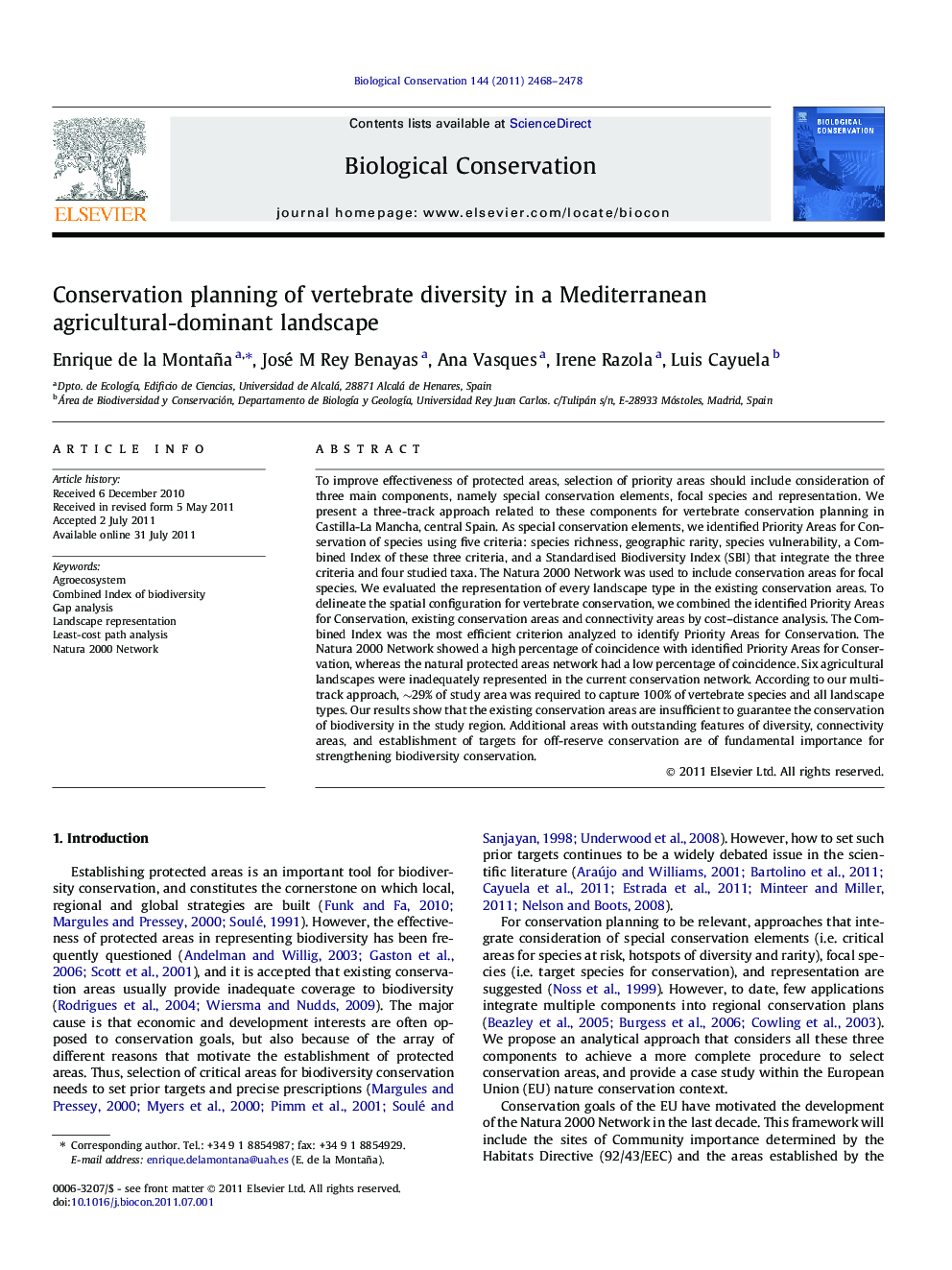| Article ID | Journal | Published Year | Pages | File Type |
|---|---|---|---|---|
| 4385415 | Biological Conservation | 2011 | 11 Pages |
To improve effectiveness of protected areas, selection of priority areas should include consideration of three main components, namely special conservation elements, focal species and representation. We present a three-track approach related to these components for vertebrate conservation planning in Castilla-La Mancha, central Spain. As special conservation elements, we identified Priority Areas for Conservation of species using five criteria: species richness, geographic rarity, species vulnerability, a Combined Index of these three criteria, and a Standardised Biodiversity Index (SBI) that integrate the three criteria and four studied taxa. The Natura 2000 Network was used to include conservation areas for focal species. We evaluated the representation of every landscape type in the existing conservation areas. To delineate the spatial configuration for vertebrate conservation, we combined the identified Priority Areas for Conservation, existing conservation areas and connectivity areas by cost–distance analysis. The Combined Index was the most efficient criterion analyzed to identify Priority Areas for Conservation. The Natura 2000 Network showed a high percentage of coincidence with identified Priority Areas for Conservation, whereas the natural protected areas network had a low percentage of coincidence. Six agricultural landscapes were inadequately represented in the current conservation network. According to our multi-track approach, ∼29% of study area was required to capture 100% of vertebrate species and all landscape types. Our results show that the existing conservation areas are insufficient to guarantee the conservation of biodiversity in the study region. Additional areas with outstanding features of diversity, connectivity areas, and establishment of targets for off-reserve conservation are of fundamental importance for strengthening biodiversity conservation.
► We use an approach that integrate special elements, focal species and representation. ► We identified Priority Areas for Conservation of species using five criteria of diversity. ► Our Combined Index is an effective and robust measure of biodiversity. ► Natura 2000 represents insufficiently the traditional agricultural landscapes. ► Our approach achieves representation of every landscape and vertebrate diversity.
